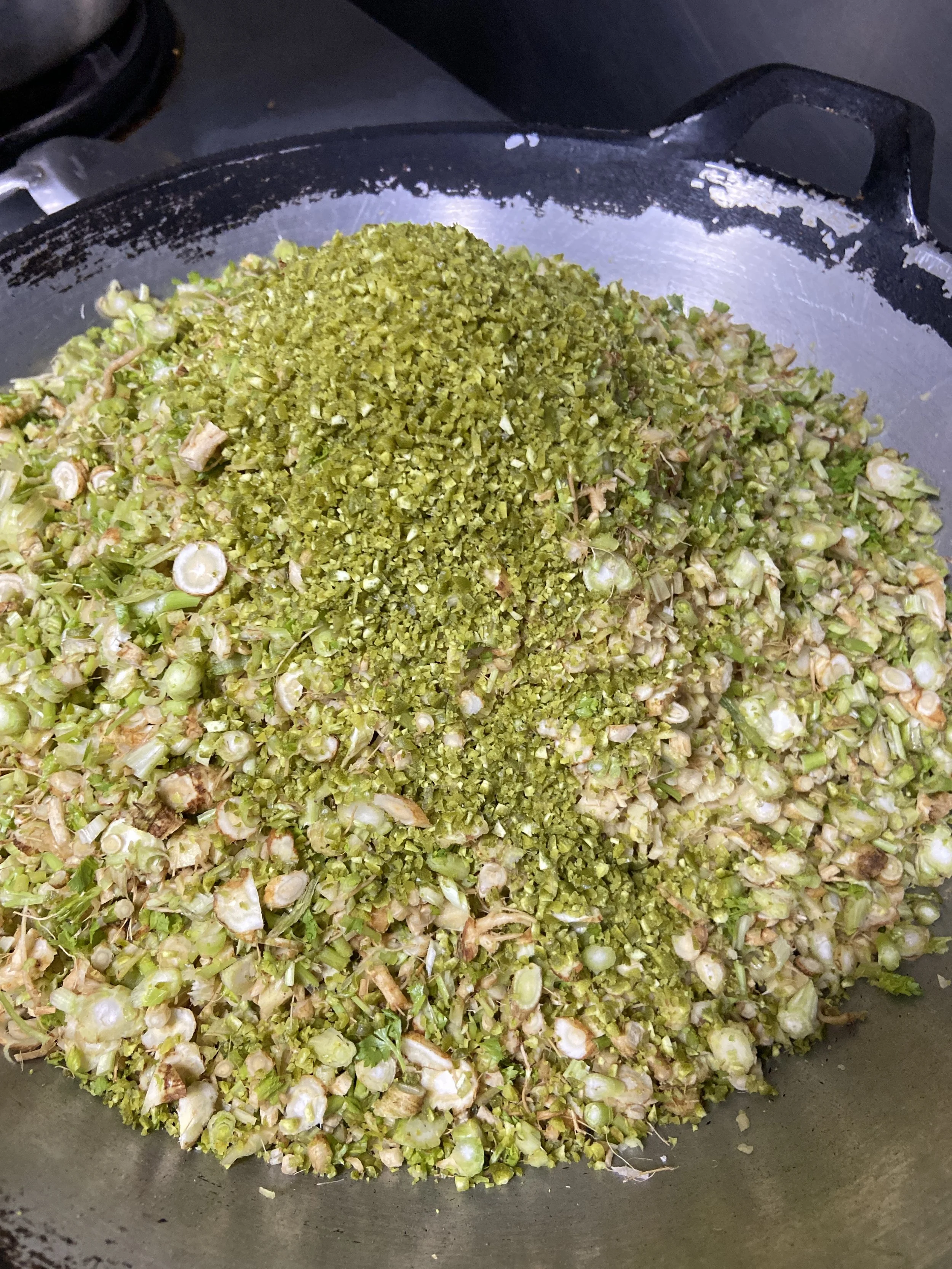Episode 1: Gang Keow Wan
The Emerald Enchantress:
Unveiling the Secrets of Gang Keow Wan
As dawn breaks over Hua Hin's pristine beaches, the kitchen at Baan Gliwang is already humming with life. Today, we embark on a journey to the heart of Thai cuisine with Gang Keow Wan, the famous Green Curry.
Gai, leads us to a table laden with an array of fresh ingredients. "Look," she says, "this is the palette from which we paint our green masterpiece." Before us lies an abundance of locally sourced produce: vivid green chillies, fragrant kaffir lime leaves, plump Thai eggplants, and sprigs of sweet basil.
"The secret of Gang Keow Wan," Gai explains, "lies in its homemade curry paste." She shows us to a weathered granite mortar and pestle, tools present in the kitchen for generations.Taking great care, she begins the time-honoured ritual of grinding the ingredients. The air is filled with an intoxicating aroma as lemongrass, galangal, and coriander roots release their essence.
"This is where we differ from Gang Massaman," Gai notes. "While Massaman whispers of distant lands and slow-cooked richness, our Green Curry is reminiscent of Thailand's lush landscapes and vibrant spirit."
As the paste is almost finished, she shares a family secret. "We add a single, young green peppercorn to our paste. It's subtle but adds a depth that elevates the entire dish."
Next comes the cooking process, a delicate dance of flavours and textures. Gai reaches for a large bowl filled with creamy white liquid. "This," she tells us, "is the heart of our curry - fresh coconut milk, squeezed this morning from locally sourced coconuts." She explains that they never use canned or processed coconut milk. "The difference in taste is remarkable," she insists. "It's more work, but it's what makes our Gang Keow Wan truly special."
Gai gently heats the fresh coconut cream until it splits, releasing its natural oils. "This step is crucial," she emphasises. "It allows the curry paste to bloom, unlocking its full potential."
The kitchen fills with a symphony of sizzles and pops as the paste meets the oil. Gradually, the meat is added followed by more coconut milk, simmered for at least an hour before adding the seasoning, fish sauce and palm sugar.
Finally, vegetables are added. "We source our ingredients from local farmers committed to sustainable practices," Gai states. "It's not just about flavour; it's about supporting our community and preserving our environment."
She reflects on the dish's significance as the curry simmers, "Gang Keow Wan is more than just a curry. It's a celebration of Thailand's bounty, a testament to the harmonious blend of flavours that define our cuisine."
The finished dish is spectacular : a vibrant green pool studded with colourful vegetables and tender meat. As we take our first bite, the combination of flavours unfolds —the heat of the chillies, the freshness of the herbs, and the richness of the fresh coconut milk, all in perfect harmony.
"This," Gai says with a satisfied smile, "is the taste of Thailand. It is fresh, bold, and utterly unforgettable."
As we savour the Gang Keow Wan, we can't help but feel we've been let in on a precious secret. This isn't just a meal; it's a journey through Thailand's culinary heritage, a testament to the power of fresh ingredients, meticulous preparation, and time-honoured recipes. It reminds us that in Thai cuisine, every dish tells a story—and Gang Keow Wan's tale is vibrant.

